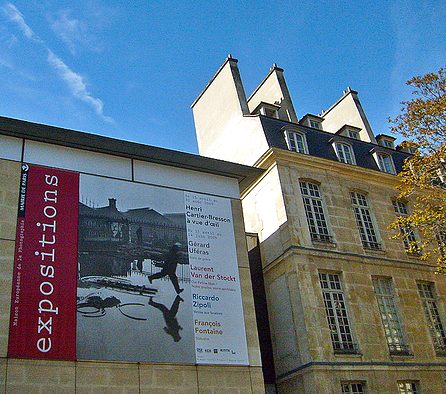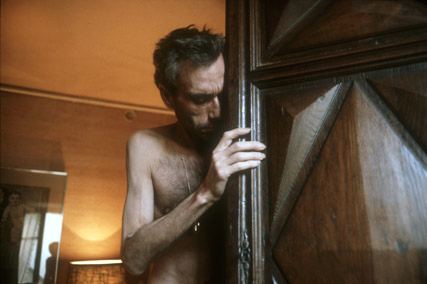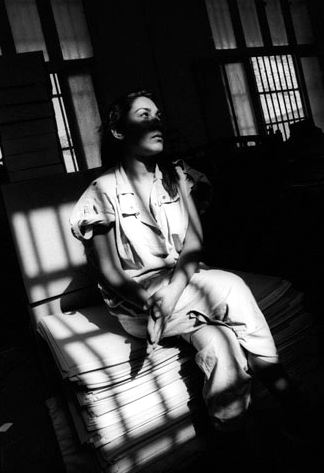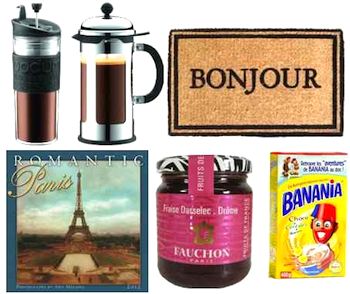Maison Europeenne de la Photographie: Jane Evelyn Atwood Photography Exhibition

- SUBSCRIBE
- ALREADY SUBSCRIBED?
BECOME A BONJOUR PARIS MEMBER
Gain full access to our collection of over 5,000 articles and bring the City of Light into your life. Just 60 USD per year.
Find out why you should become a member here.
Sign in
Fill in your credentials below.
 Jane Evelyn Atwood, photographies 1976-2010
Jane Evelyn Atwood, photographies 1976-2010
Maison Européenne de la Photographie
until September 25th
Getting to the gallery
Although the Maison Européenne de la Photographie museum is only a ten-minute stroll from Place de la Bastille or Hôtel de Ville, it is off the usual tourist trail, so it can be a great starting point for a more authentic Paris experience. When you walk through the small doorway you’ll be pleasantly surprised by the clean, bright contemporary space. The architect obviously had tranquillity in mind, as inside it’s so quiet you could forget you’re in a capital city.
The inside of the gallery is a bit of a labyrinth with exhibitions set across several floors. There’s normally four or five exhibitions going on at the same time, so give yourself a couple of hours to make the most of it.
About Jane Evelyn Atwood
Jane Evelyn Atwood is an American photojournalist born in New York, living and working in Paris. I arrived at the exhibition on opening day as Atwood ran around polishing final details. She was completely hands-on and a total perfectionist, doing a hundred things at once; yet, whilst Atwood controlled the room like a puppet master, the space remained calm, which allowed visitors to take in the photos on display.
It’s this professionalism that allows her to take her camera into such private spaces, including prisons, medical institutions, brothels, and war-torn countries. Atwood gives us a window into secret worlds. The power of her work is its subtlety; many of the photos are black and white images that depict the aftermath of an event, leaving you to imagine what happened before and what will happen next.
The exhibition covers six main areas.
Institutions for the blind
The first collection of work in the retrospective shows blind people photographed by Atwood at institutions all over the world, including Paris, Tokyo and Israel. A label on the wall explains she was fascinated by photographing blind people because they are not self-conscious about how they look in front of a lens. Atwood’s pictures aren’t taken with pity, or as a scientist, but through a desire to understand another’s experience of life.
 Haiti
Haiti
Atwood documented Haiti between 2005 and 2008. Her photos show a time of poverty, violence and fear, a dangerous place for visitors as during this period two journalists were tortured and killed. Atwood’s sharp color images reveal exhaustion on the faces of those caught in the daily struggle. On first glance you assume these haunting images are the effects of the 2010 earthquake, yet from the dates you realise how hard life already was in Haiti even before the disaster struck.
The increasing anonymity of the enemy
Atwood studied the destruction caused by landmines in Cambodia, Angola, Kosovo, Mozambique and Afghanistan. The continuous carnage caused by these secretive weapons seems to have been forgotten in recent years. It takes one image to re-awaken the horror: a row of men from the same community all missing at least one limb. In case this didn’t hit home, it’s followed by a series of portraits of families affected by the weapons, shown either with missing limbs or simply sad, hollow expressions. The accompanying text reminds us that these victims will never meet their enemies and have never fought in the war that brought them.
 Jean-Louis living with and dying of AIDS
Jean-Louis living with and dying of AIDS
A group of amber-toned photos show Jean-Louis, a friend of Atwood’s, dying from an AIDS-related illness. Atwood worked with him in 1987 to educate people about the disease. The first French man to go public about the disease, Jean-Louis used his last days to fight against prejudice and misconceptions circulating about AIDS at the time. A display case nearby shows a collection of moving letters between Jean-Louis and Atwood and high-profile magazine coverage of Atwood’s photos. Jean-Louis died in November 1987.
The real Paris
This section of the exhibition explores the side of Parisian life you don’t read about in guidebooks. It looks at the real life in the city and there isn’t a beret or string of garlic in sight. It’s not just about the underworld of prostitution and transgender. There are also images that capture unforgettable moments in Parisian life, such as Jean Genet entertaining his admirers in a traditional brasserie, a woman mid-push in the maternity ward and a heartbreaking picture of her brother with his wife in a coma.
Women incarcerated
The last section of the exhibition is the most recent collection of Atwood’s photos and in my opinion the most overwhelming, a series of photos from women’s prisons around the world. My eyes were opened wide to the nightmare of babies separated from their mothers at birth, prisoners turning to self-mutilation, hard labour and drying-out units for alcohol and drug addicts. Oddly it was a simple photo that I found most upsetting, that of a woman kissing her husband for dear life at the end of visitor time.
Lindsey Marsh is a self-declared art-addict and we’re pleased to welcome her to BonjourParis as our new arts editor at large.
Practical information
Maison Européenne de la Photographie until September 25th
Tél: (33) 1 44 78 75 00
5/7, rue de Fourcy, Paris 4th
Métro: Saint Paul or Pont Marie
Bus: 67, 69, 96 or 76
Open: Wed-Sun 11am-8pm (closed on national holidays) Last entry at 7:30pm
Entry: 7€ Adults other discounts defined at website
Café in basement, open Thursday to Sunday, 11am-7pm, and on Wednesdays from 11am-5pm
Bookshop on (French) first floor, open Wed-Sun, from 11:30am-2pm and 2:30-7:30pm.
Jane Evelyn Atwood’s work is also showing at:
In Camera (gallery)
June 23–September 24, 2011 (gallery closed in all of August)
Tél: 01 47 05 51 77
21, rue Las Cases, Paris 7th
Métro: Solferino or Invalides
Open Tuesday-Saturday 2:00pm-7:00pm or by appointment
Click to view Atwood’s website
Photo credits:
Museum photo provided by museum.
Atwood photo from publicity materials.
Les Gonaïves, Haïti, 2005 © Jane Evelyn Atwood
Jean-Louis, Paris, 1987 © Jane Evelyn Atwood
Prisoner in the workshop of the institution, the Centre Baumettes Prison, Marseille, France, 1991 © Jane Evelyn Atwood
Not yet subscribed to BonjourParis? Sign up for your free subscription & we’ll send you 50 original stories, news, recipes and travel photography every month from your most complete online France travel & Francophile lifestyle eZine. RSS or email.

One-stop shopping for air, hotel & car rental deals:
To rent a car with a 5% discount for BonjourParis.com readers, click Auto Europe Car Rental
To rent a hotel, click Auto Europe Hotels
To buy international flights, click Auto Europe Flights
Even if you don’t go, just click to look at the gorgeous decor!
You can buy anything from Amazon.com at our store w/the same competitive prices & fast delivery. Your purchases support costs of keeping BonjourParis your most complete online France travel resource. Merci in advance.
***Search hint: start at the back pages for the most recent stock at the BonjourParis Amazon.com Boutique.

New additions to our BonjourParis Amazon.com Boutique:
Bodum limited edition set French press pot + travel press
“Bonjour” welcome doormat, natural fibers
Calendar, Romantic Paris (for wall)
Fauchon preserves made w/strawberries from Drôme
Banania chocolate-banana breakfast cereal
More in 4th arrondissement, culture, europeenne photograp, Jane Evelyn Atwood, Museum, Paris art museums, Paris galleries, Paris museums, photography, photography museum


